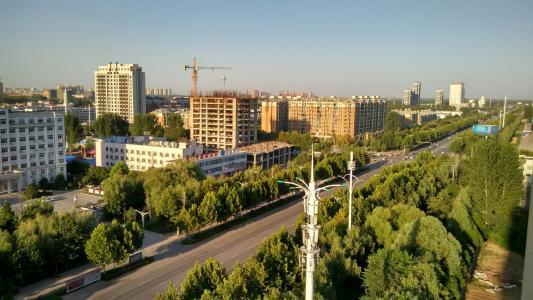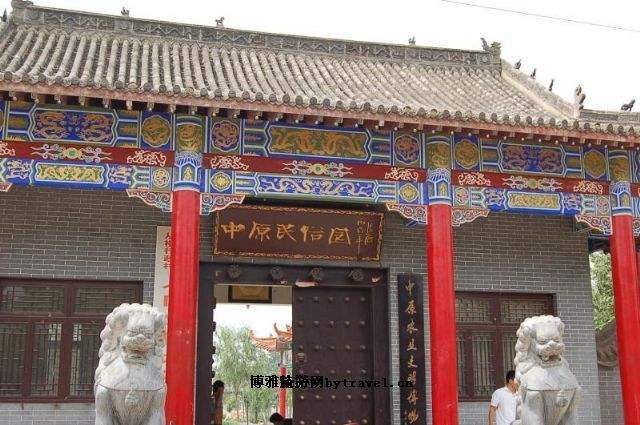Longhu Scenic Area
Huaiyang Longhu Water Conservancy Scenic Area is located in Huaiyang County, Henan Province. It is built around Longhu Lake and belongs to the urban river and lake type water conservancy scenic area. The scenic area covers an area of 16 square kilometers, of which the water area is about 7.6 square kilometers. Longhu Lake consists of four parts: Donghu Lake, Liuhu Lake, Nantan Lake, and Xiange Lake. It is the largest ring city lake in inland China. The lake surrounds the ancient city of Huaiyang, with the ancient city standing in the water. There is a city in the lake and a lake in the city, known as an inland wonder and the pearl of Central Plains. The scenic area is characterized by clear water, vast expanses, lush reeds, fragrant lotus flowers, and a harmonious blend of water and sky, creating a stunningly beautiful landscape. The scenic area has a rich historical and cultural heritage with numerous relics, including the Taihao Mausoleum Temple, the tomb of Liu Chong, King of Huaiyang from the Han Dynasty, the tomb of Cao Zhi, Pingliangtai, the site of Bao Gong Temple, the site of the City God Temple, and the main hall of Yuan Duanmin Gong Temple.
Yinshan Cultural Site
Yinshan is located 5 kilometers east of Luyi County, northwest of the Taiji Hall in Taiqing Palace. The full name of the Yinshan Cultural Site is the Yinshan Longshan Cultural Site. It is named after the Neolithic site discovered at Chengziya in Longshan Town, Zhangqiu County, and is located 300 meters west of the birthplace of Laozi, Taiqing Palace. Both Chinese history and archaeology name the cultural relics of the same period discovered as Longshan Culture. The Yinshan Cultural Site refers to the Longshan Culture period site discovered at the Yinshan site in Taiqing Palace, Luyi County.
Taikang Qing'an Temple
In Qing'an Temple, located to the east of Dongfule City, there is an earthen platform about 4 meters high with a total area of over 1000 square meters. The temple was built in the early Eastern Han Dynasty and has a long history with flourishing incense offerings. Qing'an Temple is ranked among the top temples in the country. Upon entering the temple, the front hall is the worship hall, the middle hall enshrines the statue of Shakyamuni (Buddha), and on both sides are the statues of the Eighteen Arhats, each with unique postures and distinctive features, appearing lifelike.
Dancheng Central Plains Folk Culture Park
Address: South of Provincial Road 329, Dahezhuang, Dingcun Township, Dancheng County, Zhoukou City. From the ancient farming tools of thousands of years ago to the living and production tools still used in rural areas today. Located in Dahezhuang, Dingcun, Dancheng, Henan, the 'Central Plains Folk Culture Park' grandly opened amidst the enthusiastic collision of ancient and modern agricultural civilizations. According to reports, the 'Central Plains Folk Culture Park' is the first and largest self-designed and invested folk park in Henan Province, and has been awarded the national 2A-level tourist attraction. The park houses more than 2,000 farming tools and daily necessities used by Central Plains farmers, including ancient plows, spinning wheels, looms, carriages, and sedan chairs, many of which have disappeared from folk life.
Han 'Guangwu Temple' Ruins
Located two kilometers east of the county town of Dancheng, there is a temple known far and wide within a radius of dozens of miles as the Han 'Guangwu Temple' Ruins. Legend has it that the original name of Guangwu Temple was 'Wenshu Temple', which at that time consisted of only three dilapidated halls and was unknown to the public. In the early Western Han Dynasty, Liu Xiu was pursued to this place after Wang Mang usurped the throne, leaving behind a story. 'Wenshu Temple' was then renamed 'Guangwu Temple'. The temple, having been associated with the name 'Guangwu', gained great fame and has enjoyed a thriving incense offering ever since, continuing to this day.













